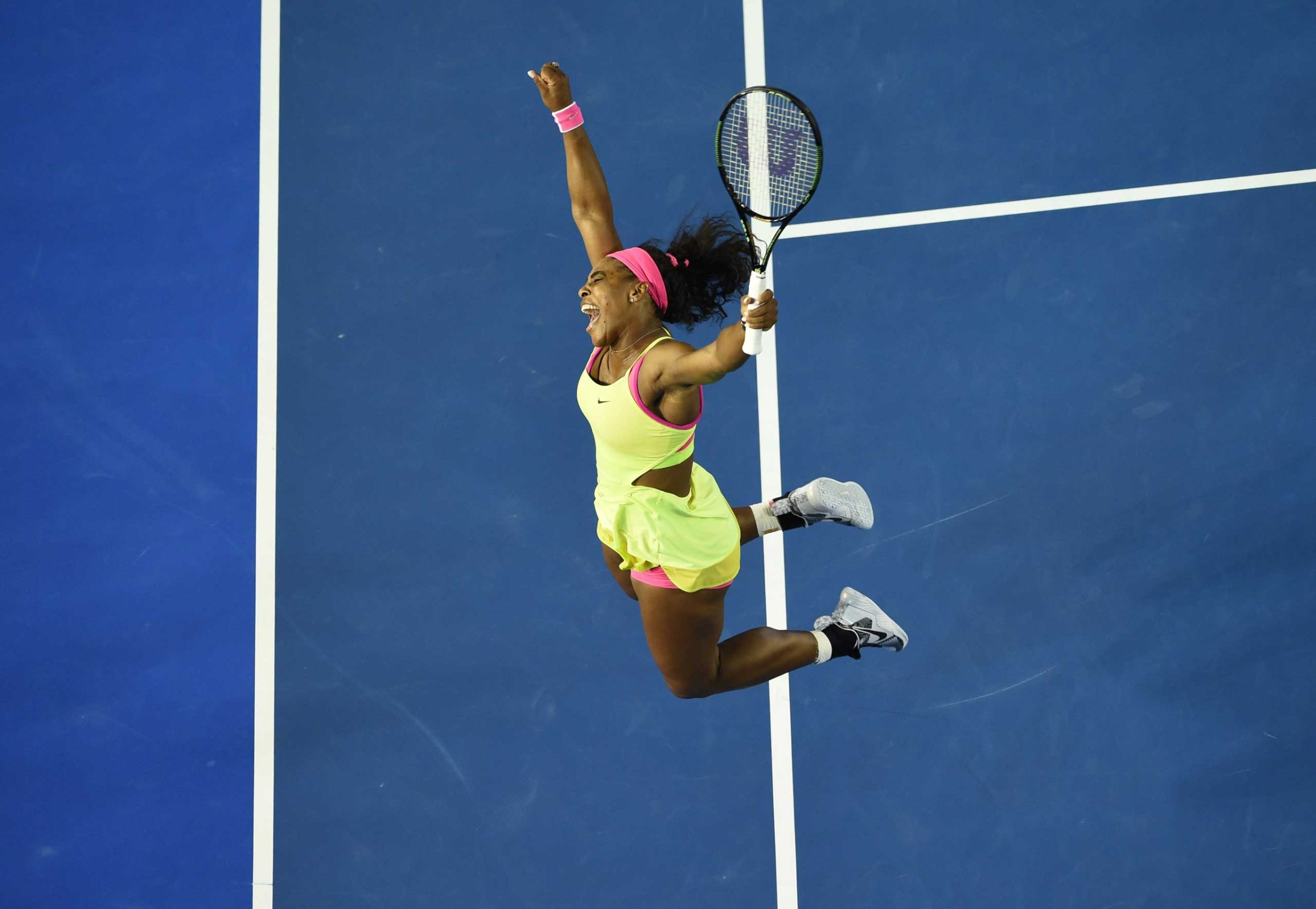
They come in all varieties. There are micromanagers and bloviators. There are delegators and relegators and benevolent despots. Kiss-ups and kick-downs. There are authentic leaders and natural born chiefs. Name a workforce and, almost by definition, there is a boss. In sports, bosses cut a remarkably wide swath. Armed with talking points, projecting defiance as he defends what is often indefensible, Roger Goodell is one kind of boss. Adam Silver, self-deprecating and often smiling, is another.
Tennis has bosses, too. Many, in fact, given its oxymoronic fractured structure. But the sport’s uberboss might be Serena Williams. She has won more major titles than anyone else currently playing. She has a cast of underlings and an entire tour that bends to her accord.
Her leadership style? She’s one of those bosses who is not always present. Early in the process, you wonder if she hasn’t spread herself too thin, if she’s fully committed, if she’s pondering her next move. And then, once the deal is on the table and it’s time to close, she arrives in full force, reminding you of why it is she resides at the top of the org chart.
The 2015 Australian Open animated Serena-as-boss. Early on, she looked sluggish. She faced 31 break points through the first six rounds of the tournament. For the first week, Serena looked disengaged. In two of her first four matches, she dropped the first set. For the first week, it looked like her older sister—herself a tennis boss at one time—might be more likely to win the title
Then, when it was time to get down to brass tacks, the Boss came to work. This is how she rolls. This is how she has always rolled. How did she respond to those 31 break points? By making 23 first serves, winning 21 of them, eight of them by serving aces. How did she respond once she dropped those first sets? By winning 6-2, 6-0, 6-3, and 6-2. The second week of the tournament? In the last three rounds, when the competition is (notionally) tightest, she lost a grand total of 21 games and zero sets.
In tonight’s final against Maria Sharapova, Serena reconfirmed that, yes, she is the boss. Though cast as rivals, they have rivalry the way a juicer has a rivalry with an orange. Their record is not a head-to-head, so much as it is a foot-to-backside. What started as a “streak” has since grown legs and tale. Coming into this match, Serena had beaten Sharapova 15 straight times, going back more than 15 years. As Serena put it the other day: “I think my game matches up well against her. I love playing her. I think it’s fun. I love her intensity. For whatever reason, I love playing. I have the time of my life.”
That fun continued tonight. In a thoroughly enthralling match, Serena won on every dimension outserving, outslugging, outrunning and outfighting Sharapova 6-3, 7-6 (5). A player beats you this ritually and it becomes deeply mental. But what is Sharapova to do? She can’t move to Serena side-to-side. She won’t outserve her. She can’t really pin her deep to the baseline either, not with Serena dictating play.
And then there is the matter of clutch play. As Sharapova, admirably, found her game and dialed in her shots, Williams went one better. Serena sent 18 aces hissing across the net and won 84 percent of her first serves. In a tiebreaker, Serena, predictably, summoned her best work. Serving at match point, Serena hit ace, only to get a dubious let call. She smiled, inhaled and hit the exact same serve for another ace. That’s her career, distilled to its essence.
For whatever indifference Serena may have projected earlier in her career, her legacy and reputation now matter greatly. She is still going strong, meeting her quarterly targets (and targets on the court). But no one stays in the corner office forever. She is concerned now about how history recalls her. Once blissfully unaware of tennis history, she now knows that passed Chris Evert and Martina Navratilova, with 19 major titles, well within sniffing distance of Steffi Graf’s 22. By the shrieks and jumps after she clubbed that last ace, you have a feeling that she knew she hadn’t just beat Sharapova; she had beaten some more history.
The hallways here are adorned with photos of former champions. After still another close, Serena left the court, headed to the locker room and passed them all. Evert,Navratilova, Monica Seles, Graf.
Serena kept walking. Walking like a boss.
More Must-Reads from TIME
- Cybersecurity Experts Are Sounding the Alarm on DOGE
- Meet the 2025 Women of the Year
- The Harsh Truth About Disability Inclusion
- Why Do More Young Adults Have Cancer?
- Colman Domingo Leads With Radical Love
- How to Get Better at Doing Things Alone
- Michelle Zauner Stares Down the Darkness
Contact us at letters@time.com